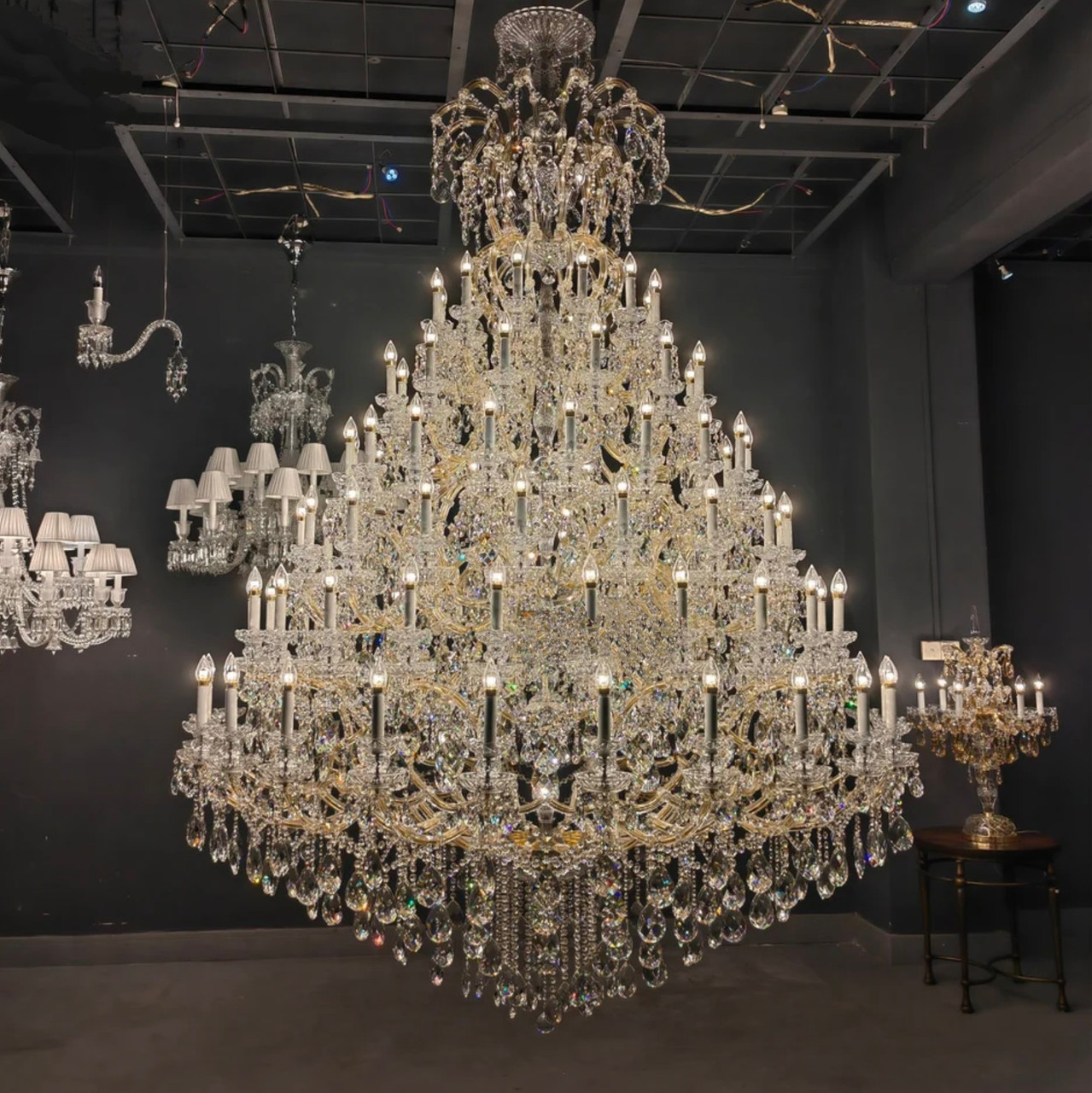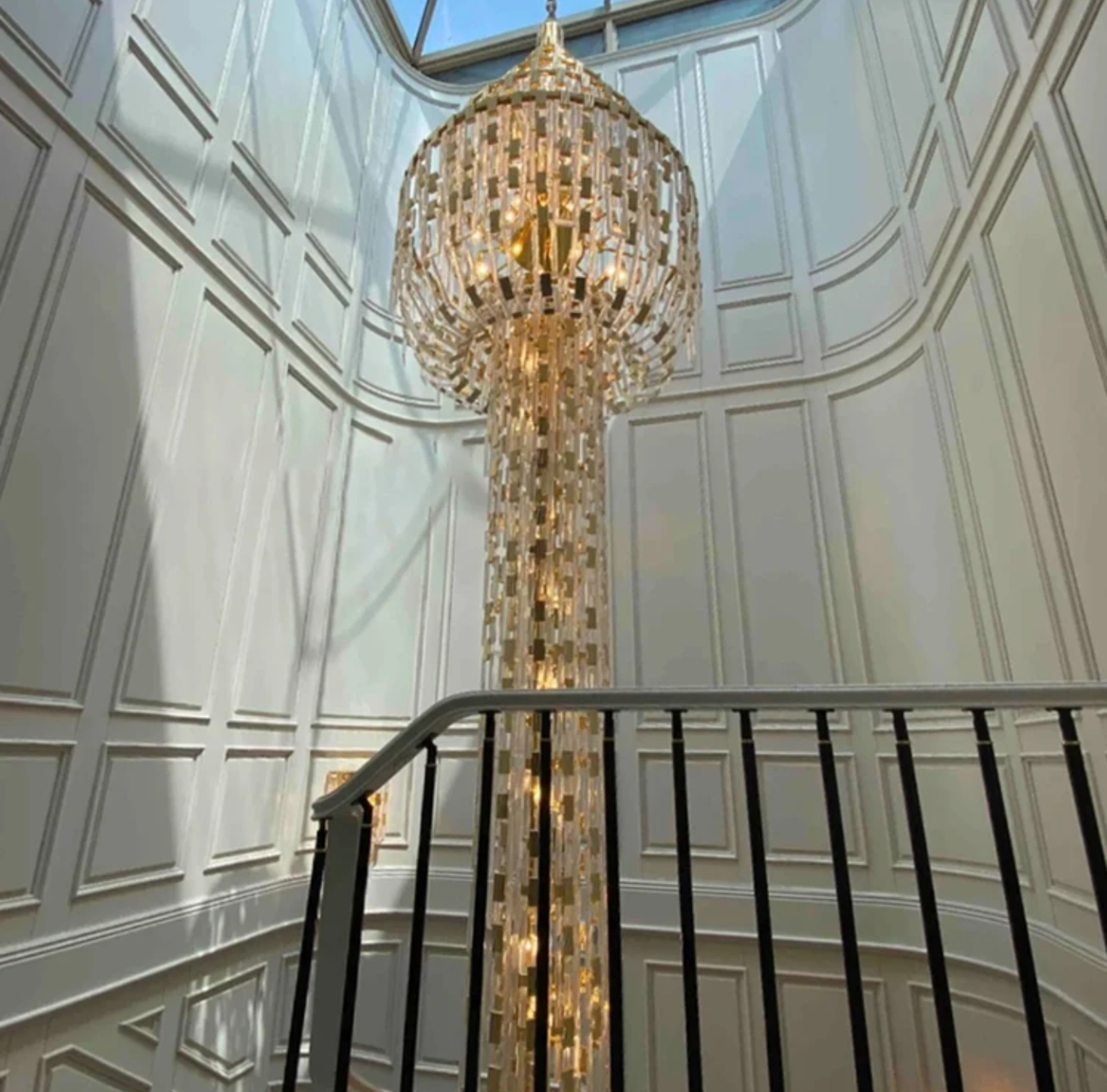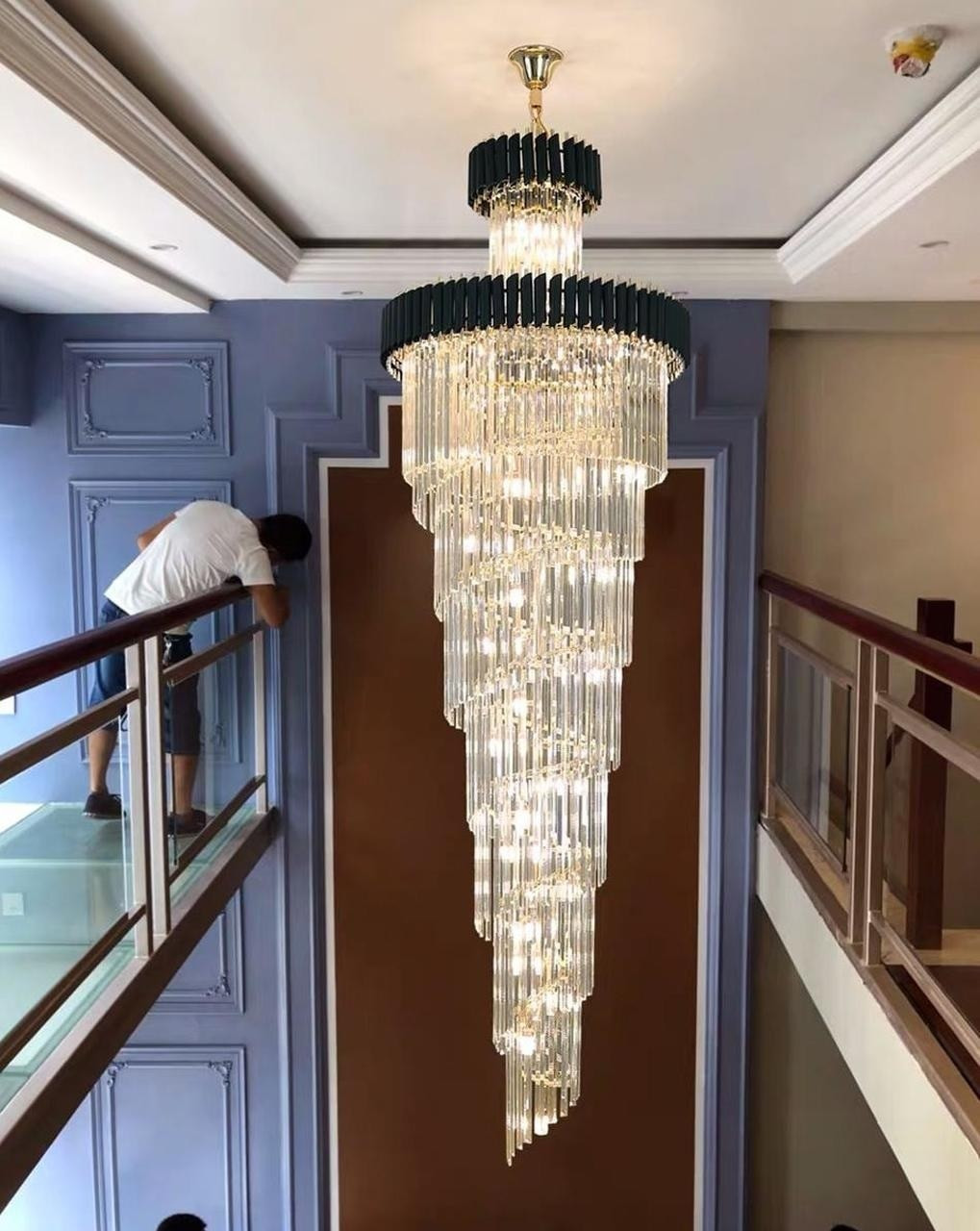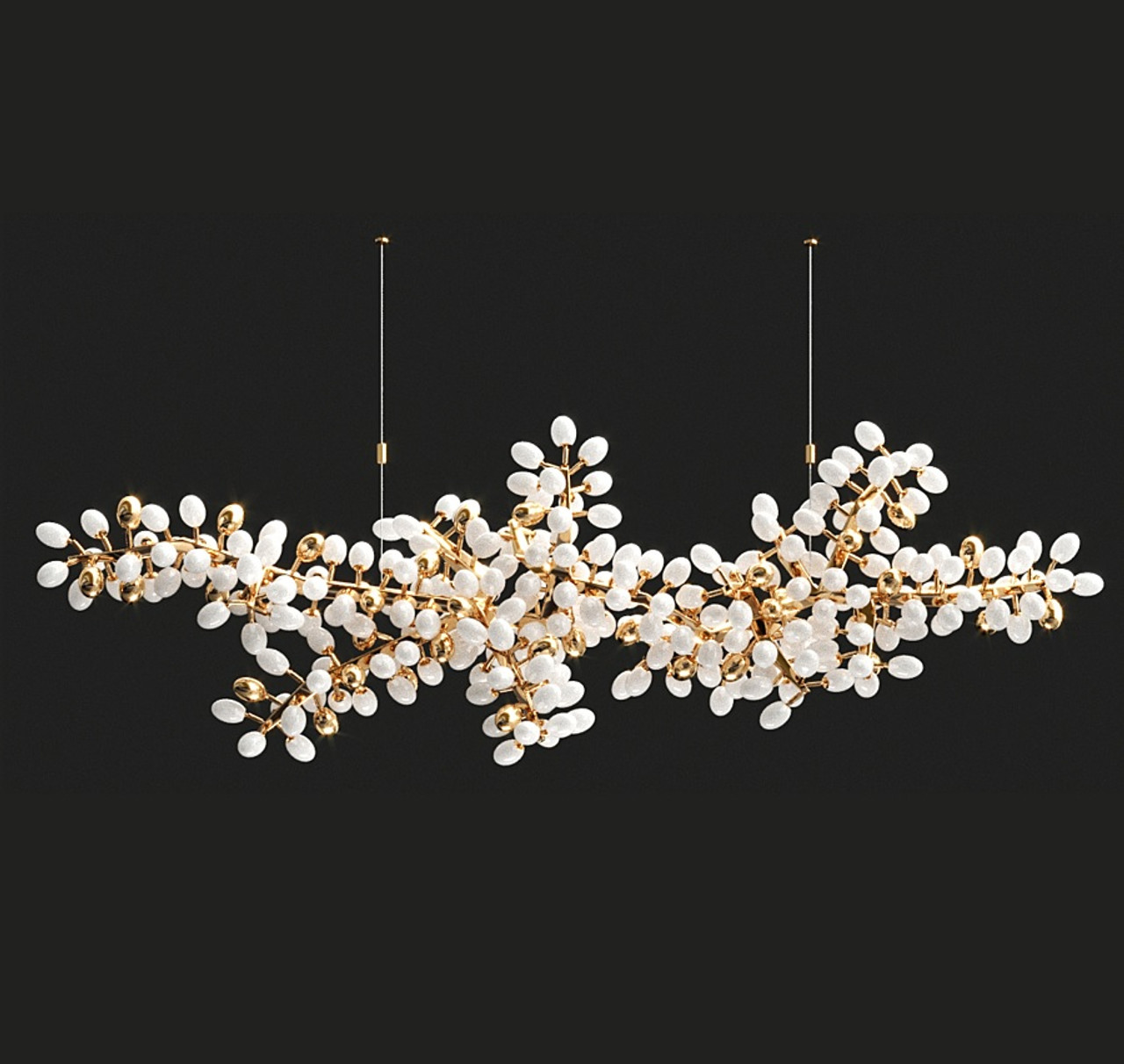Cultural Significance of Chandeliers Around the World
Jul 27, 2024
Cultural Significance of Chandeliers Around the World
The chandelier, a majestic and often opulent light fixture, has illuminated spaces with its grandeur and beauty for centuries. Beyond its primary function of lighting, the chandelier holds profound cultural and historical significance across the globe. It symbolizes not only wealth and status but also embodies the artistic and cultural expressions of the times and societies from which it originates. This article delves into the fascinating world of chandeliers, exploring their role and significance in various cultures and settings around the world.
Europe: The Birthplace of Chandeliers
The journey of the chandelier begins in medieval Europe, where it evolved from simple wooden crosses with spikes for candles to elaborate fixtures made of metal and glass. Initially serving a practical purpose in castles and churches, chandeliers quickly became symbols of wealth and status. The Renaissance period saw the advent of the Murano glass chandelier from Venice, famous for its intricate designs and the use of colorful glass, which reflected the era's artistic achievements.
In France, the chandelier became a centerpiece of opulence during the reign of Louis XIV at the Palace of Versailles. The Hall of Mirrors, with its array of spectacular chandeliers, exemplifies the power and wealth of the French monarchy. These magnificent light fixtures were not merely sources of light but also powerful symbols of authority and grandeur.
The Middle East: Illuminating the Divine
In the Middle East, chandeliers have been used to adorn mosques and public buildings, serving both decorative and symbolic purposes. The most famous example is the Mosque of the Prophet in Medina, where a series of magnificent chandeliers illuminate the space, symbolizing divine light and guidance. These chandeliers, often made of brass or bronze and adorned with intricate Islamic calligraphy, reflect the region's rich artistic heritage and religious significance.
India: A Blend of Tradition and Royalty
India's history with chandeliers is a testament to its royal past and rich cultural tapestry. Palaces and forts across the country boast spectacular chandeliers that blend traditional Indian craftsmanship with influences from European colonialism. The Sheesh Mahal (Palace of Mirrors) in Jaipur features a breathtaking array of mirrored tiles and chandeliers, creating a dazzling effect that symbolizes the fusion of Mughal and Rajput architecture and artistry.
Russia: The Imperial Splendor
The chandeliers of Russia echo the splendor and extravagance of its imperial era. The Winter Palace in St. Petersburg, home to the famous Hermitage Museum, showcases some of the most exquisite examples of chandelier craftsmanship, blending Baroque and Rococo styles. These chandeliers, often adorned with thousands of crystals, illuminated the grandiose balls and ceremonies of the Russian court, symbolizing the power and sophistication of the Russian Empire.
America: From Practical to Decorative
In America, the significance of chandeliers made in USA evolved from practical fixtures in the colonial era to decorative symbols of wealth and modernity in the 19th and 20th centuries. The introduction of electricity transformed chandeliers into architectural focal points in theaters, hotels, and mansions, reflecting the country's rapid industrialization and technological advancement.
The Far East
Chandeliers
have long been a symbol of luxury, status, and artistic expression
around the world, including in the Far East. The cultural significance
of chandeliers in countries such as China, Japan, Korea, and others in
the Far East is intertwined with the region’s historical, social, and
technological developments. Here’s a brief overview:
ChinaIn
China, chandeliers entered the lexicon of luxury and opulence
particularly with European influence in the 18th and 19th centuries.
Chinese interpretations of chandeliers often incorporated traditional
motifs, such as dragons, phoenixes, and other elements significant in
Chinese mythology, using materials like jade, bronze, and crystal. They
were symbols of wealth and power, often found in palaces, mansions, and
the homes of the affluent. In modern times, chandeliers in China merge
traditional designs with contemporary aesthetics, symbolizing a blend of
historical richness and modernity.
JapanJapanese
culture, known for its minimalist and elegant aesthetics, incorporates
lighting in a way that emphasizes harmony and natural beauty.
Traditional Japanese chandeliers and lighting fixtures are often
inspired by nature, using materials like paper and wood, reflecting the
Japanese philosophy of simplicity and nature. While chandeliers in the
Western sense were not historically common, the use of hanging lanterns
and intricate lamp designs in temples and traditional buildings carries a
similar significance in terms of architectural beauty and illumination.
KoreaKorean
traditional architecture and interior design also showcase a unique
approach to lighting, emphasizing functionality, simplicity, and natural
materials. The introduction of chandeliers in Korea was influenced by
Western culture, becoming symbols of modernity and luxury in the 20th
century. Modern Korean design often blends traditional themes with
contemporary elements, where chandeliers can signify both a respect for
cultural heritage and a forward-looking perspective.
Broad Cultural Significance
In
general, across the Far East, chandeliers have evolved from mere
sources of light to significant cultural symbols. They represent a
fusion of tradition and modernity, where traditional materials and
motifs are blended with contemporary designs. In luxury establishments,
public buildings, and affluent homes, chandeliers are a statement of
status and aesthetic taste, reflecting the cultural values and artistic
heritage of the region.
Moreover, the use of chandeliers in
religious and ceremonial spaces across these cultures adds a spiritual
and ceremonial dimension to their significance, highlighting their role
in cultural rituals and celebrations.
It's important to note that
while the adoption of chandeliers in the Far East was influenced by
Western styles, these cultures have imbued them with their unique
aesthetics and meanings, creating distinctive traditions of lighting
that reflect their rich cultural heritages.
Who invented chandeliers?
Chandeliers have a history that spans many centuries and their invention cannot be attributed to a single person or specific time period. The earliest forms of chandeliers were simple wooden crosses on which candles were fixed, used primarily in medieval churches and abbeys during the High Middle Ages. These early chandeliers were designed to illuminate large spaces and were a symbol of luxury and status.
The word "chandelier" comes from the French word "chandelle," meaning candle. The design and complexity of chandeliers evolved over time, with improvements and variations appearing across different cultures and eras. By the 15th century, ornate chandeliers made of metal and wood, adorned with crystals and precious stones, became popular in palaces and homes of the wealthy in Europe, reflecting the wealth and status of their owners.
The development of lead crystal in the 17th century by English glassmaker George Ravenscroft marked a significant turning point in chandelier design, allowing for more intricate and reflective lighting fixtures. This innovation led to the creation of the highly ornate and elaborate chandeliers associated with the Baroque period.
As lighting technology advanced, so did the design of chandeliers, incorporate hudson furniture barlas baylar lighting gas lighting in the 19th century and electric light bulbs in the late 19th to early 20th centuries, further expanding their use and design complexity.
Thus, the invention of chandeliers is a cumulative result of centuries of evolution in design, materials, and lighting technology, reflecting changes in technology, art, and social status through time.
Religious Ceremonies and Public Buildings
Beyond their use in homes and palaces, chandeliers hold significant religious and ceremonial roles. In many cultures, chandeliers are integral to religious ceremonies, symbolizing enlightenment, divinity, and the heavens. For instance, in Christian churches, chandeliers often hang above the altar, representing the Light of Christ. Similarly, in Jewish tradition, chandeliers or large menorahs illuminate synagogues, underscoring the importance of light in religious rituals.
Public buildings worldwide, from opera houses to government halls, employ chandeliers not only for illumination but also as statements of cultural identity and artistic expression. They serve as reminders of a place's history, achievements, and aspirations, connecting the past with the present.
Conclusion
The chandelier, in its myriad forms and styles, transcends its function as a mere light source. It is a vessel of cultural and historical narratives, reflecting the values, traditions, and artistic sensibilities of societies around the globe. From the grand palaces of Europe and the sacred spaces of the Middle East to the royal courts of India and the opulent public buildings of America, chandeliers illuminate the rich tapestry of human civilization. They remind us of our shared heritage and the enduring beauty of human creativity across ages and cultures.







